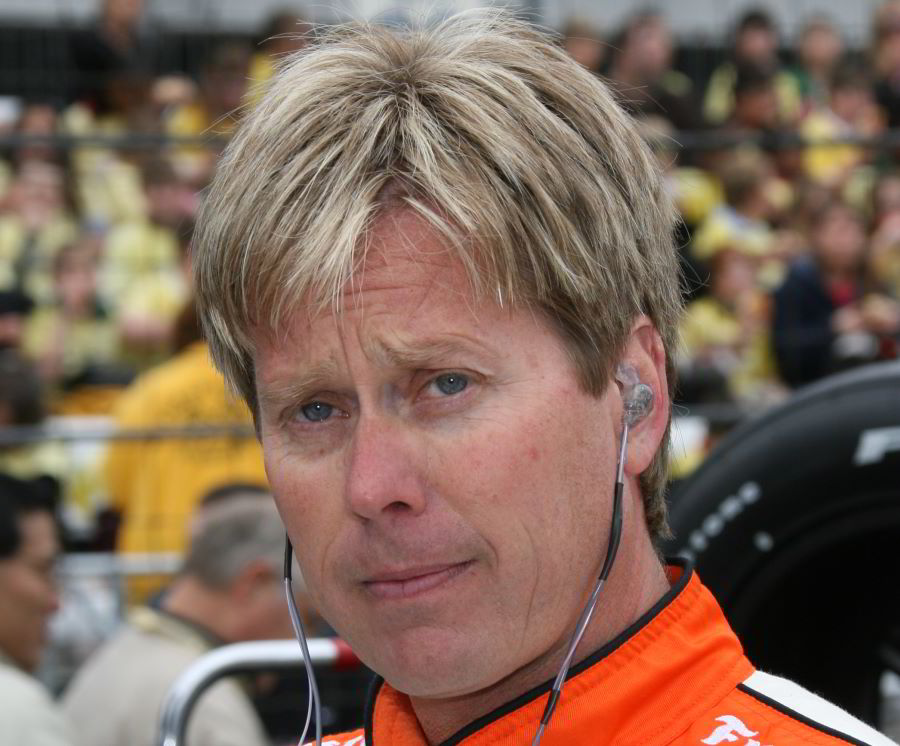Indy 500 driver blasts qualifying format
 |
| Davey Hamilton |
After suffering crippling leg injuries in a crash during an IndyCar race at Texas Motor Speedway in 2001, Davey Hamilton proved something to himself when he returned to the race car to finish ninth in last year’s Indianapolis 500.
Hamilton is back for another run in this year’s 92nd Indy 500 but spoke out against the unique qualifying format that only has 11 cars safely in the field after Sunday’s second-round of qualifications were rained out.
Under the old Indy 500 qualifying format, as many as 20-25 cars could have qualified last Saturday, which would have lessened the tension as teams return to the track for practice on Wednesday morning.
Even that is in doubt as heavy rain is expected to return Wednesday after two glorious and dry days Monday and Tuesday when the Indianapolis Motor Speedway was closed to track activity.
Early forecasts calls for rain for Saturday’s third day of qualifications and Sunday’s Bump Day.
“I’ll just be straight up – I don’t like it," Hamilton told PA SportsTicker. “I don’t like the qualifying format at all. I personally feel like us as drivers we hang our tail out there. Qualifying is meant to hang your (tail) out. I just did that Saturday and I felt great about it but missed the top 11 by 15-100ths of a second.
“Now, I have to go do it all over again."
The new qualifying format was introduced in 2005, partly because of the low number of cars entered in the Indy 500 in the days before unification of the IndyCar Series with the former Champ Car Series. With the number of cars available, IndyCar president of competition Brian Barnhart devised a plan where teams could have three attempts per day per car.
For instance, if a driver qualified for the pole but fell short of the top starting spot, he could withdraw his previous speed and make another run at it. The same could happen for drivers at the end of the grid for that day.
Pole Day qualifications locked in the top 11 cars with second day qualifications filling positions 12-22. Once that number was reached, then the slowest car on that day was eligible to be bumped. Positions 23-33 would be filled on third day qualifications with the slowed car from that session on the bubble.
The final day of qualifications would be Bump Day where the slowest car in the field could be bumped out of the lineup, no matter which day it qualified.
Under the old format, there was no limit to the number of cars that could make the field on any particular day, so it was conceivable the entire 33-car starting field could qualify on the first day of time trials.
Once a car completed a qualification attempt, that car was locked into the field until the full 33 cars had been set. If a team wanted to make another attempt on Pole Day, that car would be withdrawn from the lineup and out of the race, meaning an additional attempt would have to come in a backup car.
Now that the IndyCar Series is unified, there are plenty of car/drivers combinations at the Indianapolis Motor Speedway, so the new format isn’t necessary, although it does provide plenty of drama for the spectators.
In Hamilton’s mind, it also provides too much drama for the drivers and teams.
“I don’t think the fans got any enjoyment out of having just 11 cars put in that field," Hamilton said. “I don’t think the fans got any enjoyment out of Ed Carpenter bumping Davey Hamilton out. There were no cheers. I do think it is exciting to get three opportunities for the pole.
“But I bet you if there was a rule where if you qualified and took your time for that race, there would have been 20-25 cars in the race right now."
Hamilton was sympathetic for Rahal Letterman Racing driver Ryan Hunter-Reay, who was bumped out of the top 11 and then went out to bump his way back into the field, only to crash hard into the third turn wall with 40 minutes left in the session.
The result is Hunter-Reay has to wait another week and Rahal Letterman Racing has a crashed race car to repair.
“He could have been hurt," Hamilton said. “It cost Rahal Letterman a load of money to get that car fixed just trying to do what they set us up to do and that is get in the top 11. We all want to be there because we knew rain was coming on Sunday.
“Now, the guys in that top 11 can do 100 percent race setups while we still have to do qualifying runs and change setups." More at Yahoo Sports
